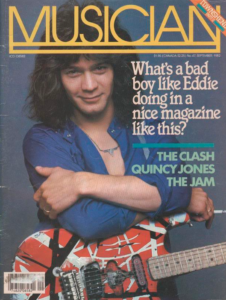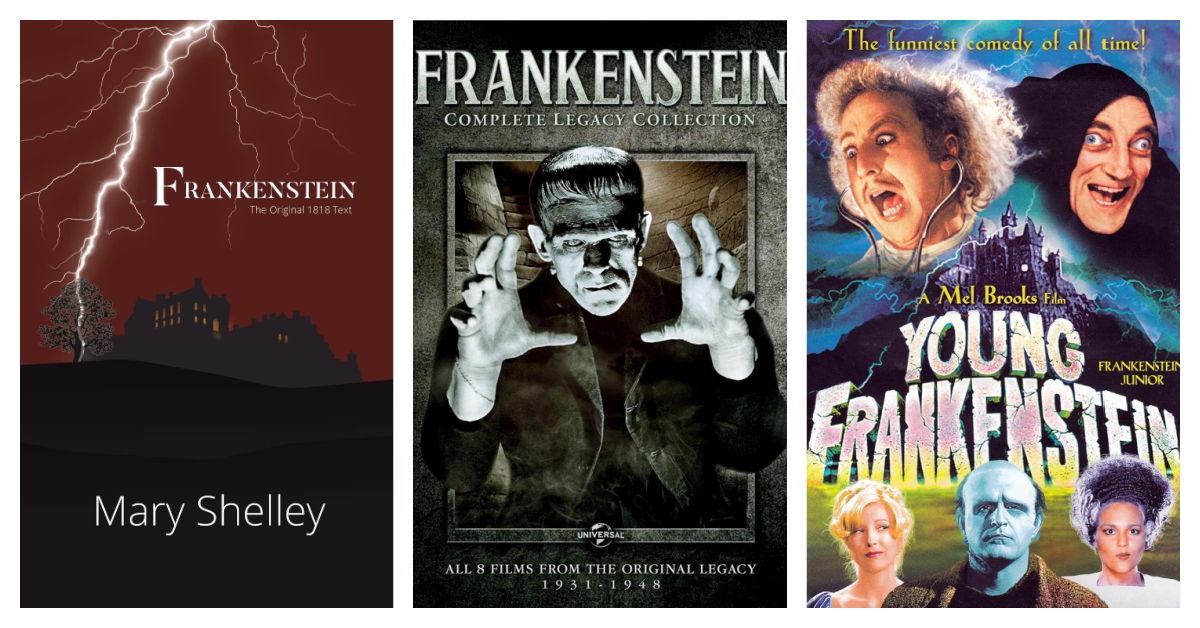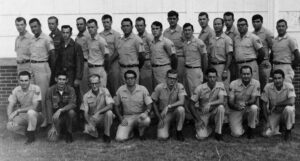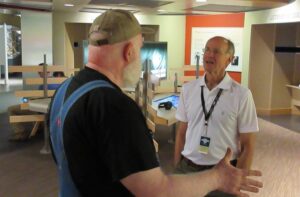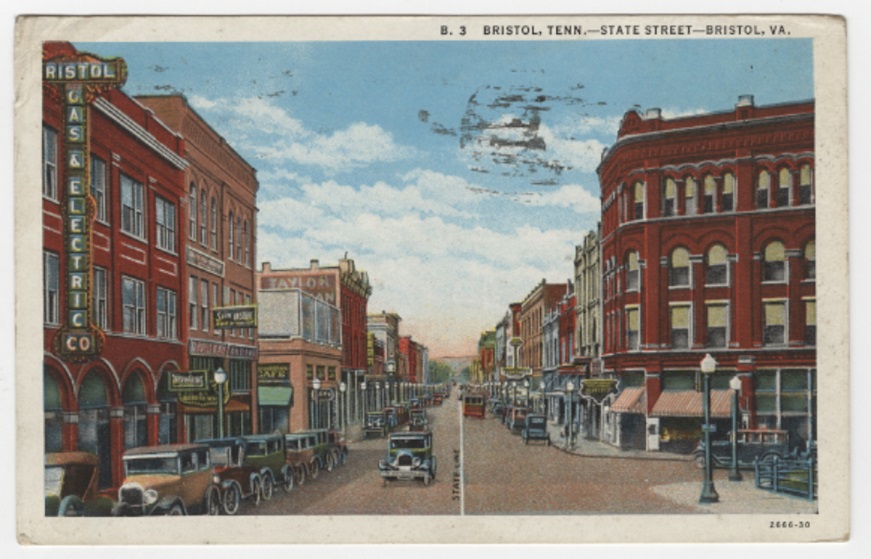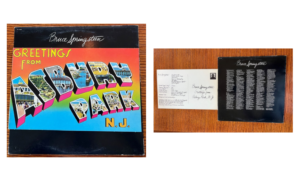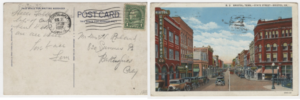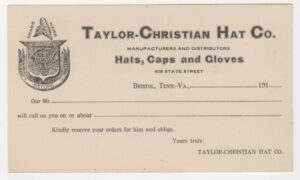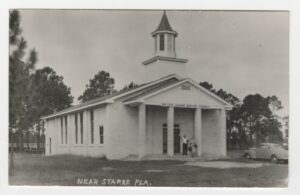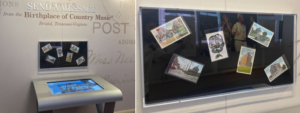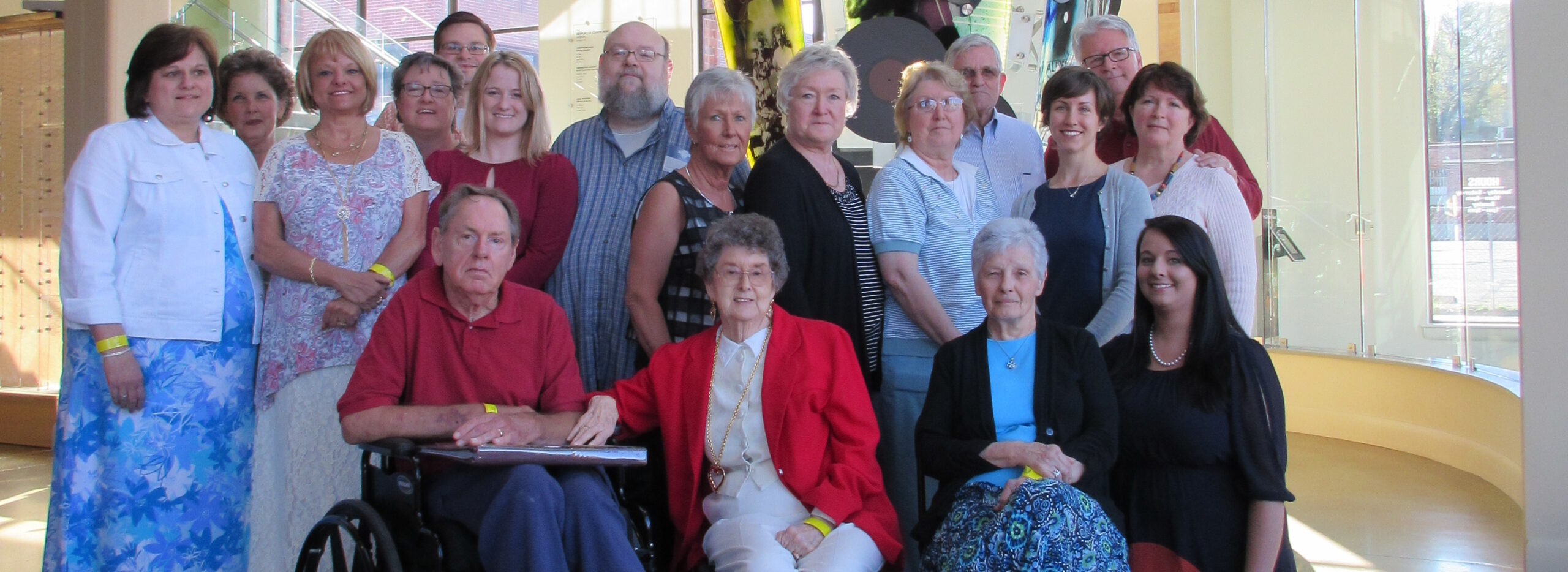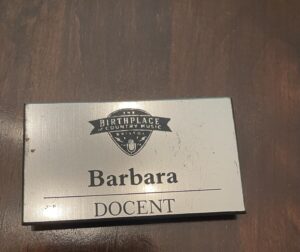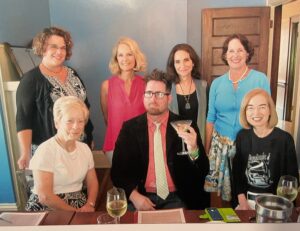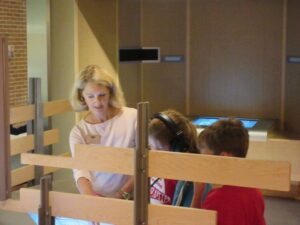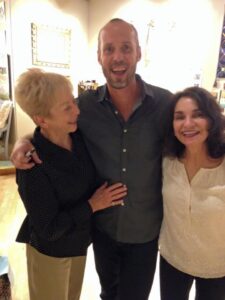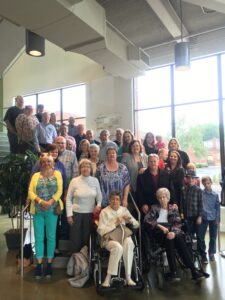By Rene Rodgers, Head Curator at the Birthplace of Country Music Museum.
November 21 marks the 103rd anniversary of the release of the movie Frankenstein (the book by Mary Shelley upon which it was based was published on January 1, 1818). For those who don’t already know, Frankenstein is the doctor rather than the monster – and Frankenstein’s poor monster only became a true monster after being rejected and alienated by the person who created him and the society around him. As he says at one point in the book, “I was benevolent and good; misery made me a fiend.”
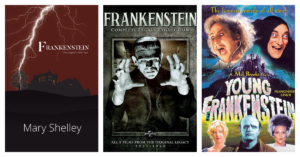
With this anniversary, we want to share some non-fiendish instruments (depending on your perspective!), ones that are made up of elements of different instruments with a mish-mash of musical qualities. “Frankenstein instruments,” if you will!
Two Frankenstein instruments that touch on the history of the 1927 Bristol Sessions and old-time music are the harp guitar and the banjo ukulele – the names of both make the origins of their different parts obvious! The harp guitar is basically a guitar with the addition of a second neck, either curved or straight, that bears several unstopped open strings, which are usually plucked individually as is done when playing the harp. The harp guitar was never commonly used in mainstream American music, but it possibly appears on the 1927 Bristol Sessions in the distinctive gospel recordings by Alfred Karnes who was skilled on the instrument and known to play it. Some scholars believe that he played it on “I Am Bound For The Promised Land,” “When They Ring The Golden Bells,” and “To The Work.” However, others question whether Karnes played harp guitar at all on these songs. The harp guitar is difficult, if not impossible, to hear when played in an ensemble, and Karnes might have used a traditional guitar instead, or perhaps only played the extra strings on the harp guitar now and then.
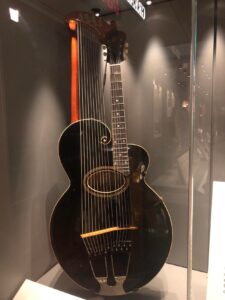
Banjo ukuleles – more commonly called banjo ukes and also known as banjoleles – look like a reduced version of a banjo with the standard body/head of the banjo and the shorter neck and four strings of the ukulele. Banjo ukes were particularly popular during the 1920s and 1930s, giving performers the ease of playing and tuning found with the ukulele with the sound and volume of the banjo. Popular on the vaudeville circuit, they have also been played by country and bluegrass musicians, and often are used in comedic playing styles. Other banjo hybrids include the banjo dulcimer (or dulci-banjo), the mandolin banjo (or banjolin), and the bass banjo.
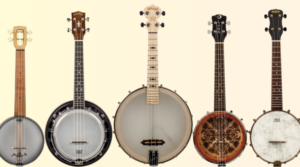
The kazoo is another instrument that often takes on the form of or is combined with different instruments. For instance, kazoos can look like trumpets or saxophones, amongst other instruments or musical items (like a microphone). And there are also trumpet, trombone, and French horn kazoos that come closer to their partner instruments’ sizes. While these kazoo mixes are similar to other Frankenstein instruments in that they look like they are a mix-up of different instruments together, they are still played – and mostly still sound – like kazoos, without taking on any of the musical qualities of the partner instrument. If you want to know more about kazoos in general, check out our Instrument Interview HERE.
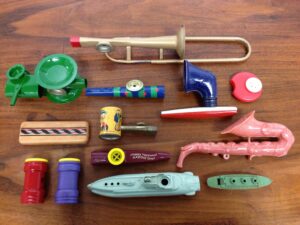
One of the weirdest Frankenstein instruments is the ukelin, an instrument we’ve highlighted on our blog before. Of the Frankenstein instruments, the ukelin is closest to a monstrosity – not in appearance but in its effects on those who tried to play it! The ukelin utilizes two sets of strings for a total of 32: one set of sixteen melody strings and another set of four groups of four bass strings all tuned to a different chord. On the neck of the instrument, the first set of strings is akin to a violin, and there are guiding posts located on the neck to show the player where to move the bow in order to elicit the desired melody. On the body of the instrument, the accompanying chords are meant to be plucked or picked to the song being played. Ukelins were first patented in 1923 and became quite popular in the 1930s – they were sold door-to-door by traveling salesmen who would disingenuously convince potential customers that the instrument was easy to play and would make them into a musician within days or even hours. Once bought, however, the actual playing proved to be a real challenge. There were too many strings doing different things, and once they fell out of tune, they were nearly impossible to get back into tune, soon resulting in a cacophony of unpleasant sounds. Inevitably, these instruments soon ended up either given away, stored and forgotten in attics, or perhaps even trashed by someone whose patience ran too thin while trying to make beautiful music…which is why we have two ukelins in our collection!
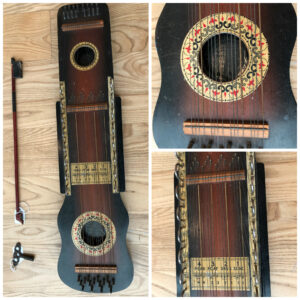
Finally, none of these Frankenstein instruments should be confused with what is known as the Frankenstein guitar, the name given to Eddie Van Halen’s guitar by his devoted fans. This wonderfully different instrument was first properly introduced to the world with Van Halen’s (the band) debut album in 1979. Not only was it played by Eddie Van Halen, but it was also essentially built by him from different parts, concepts, and personal innovations. Basically, the guitars he could buy didn’t have all the qualities or abilities he needed to perform the music he wanted to play – so he created exactly what was needed to make him one of the most revered rock guitarists of all time. You can read more HERE about this extraordinary player and his Frankenstein guitar (and even get a replica of your own!).
